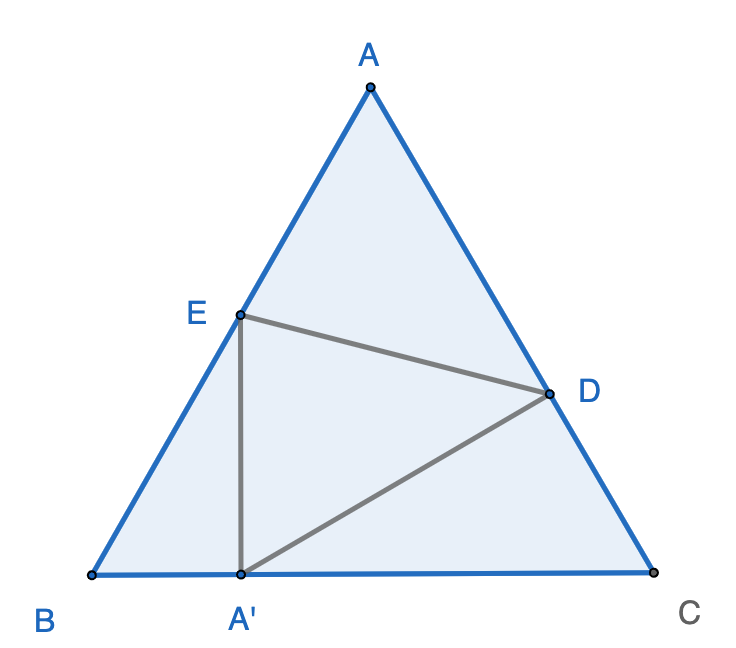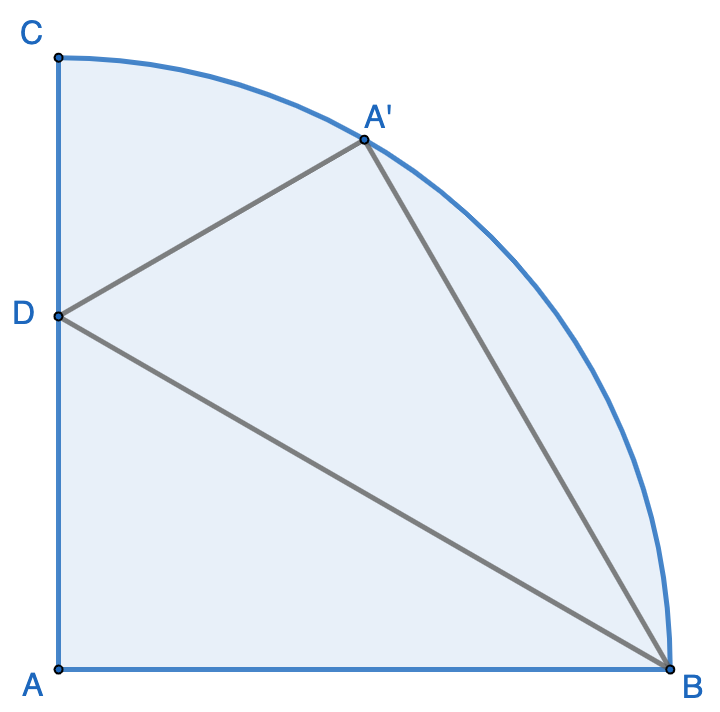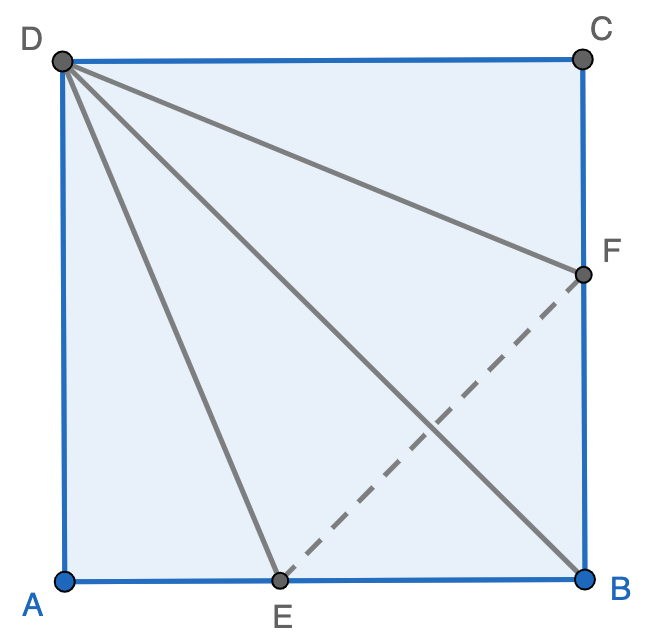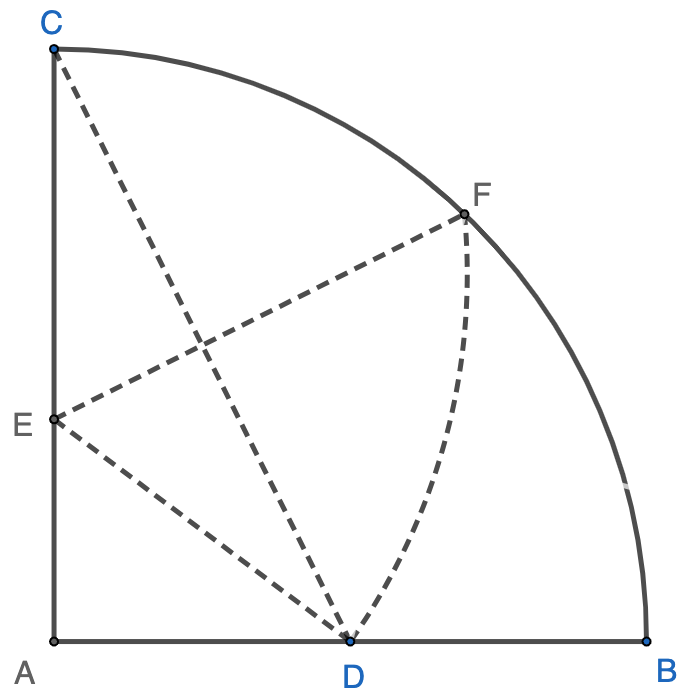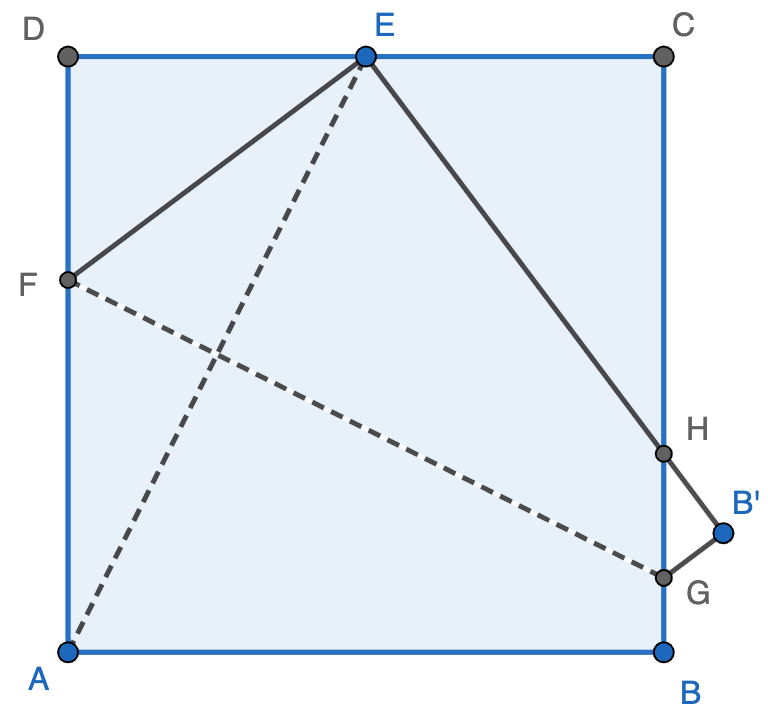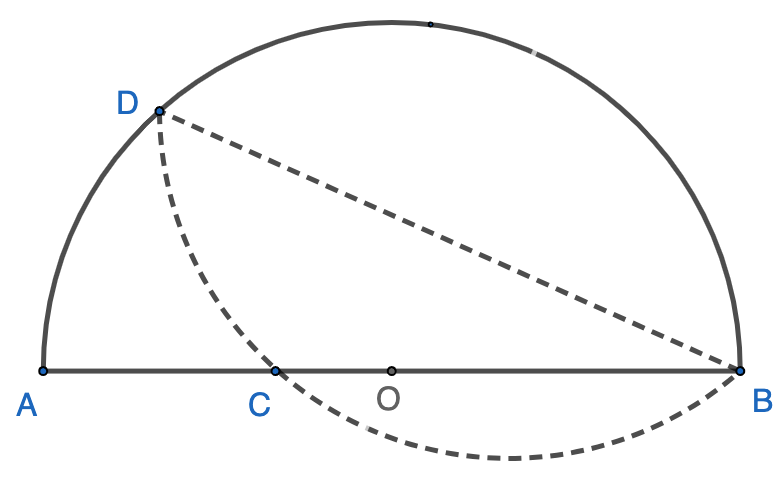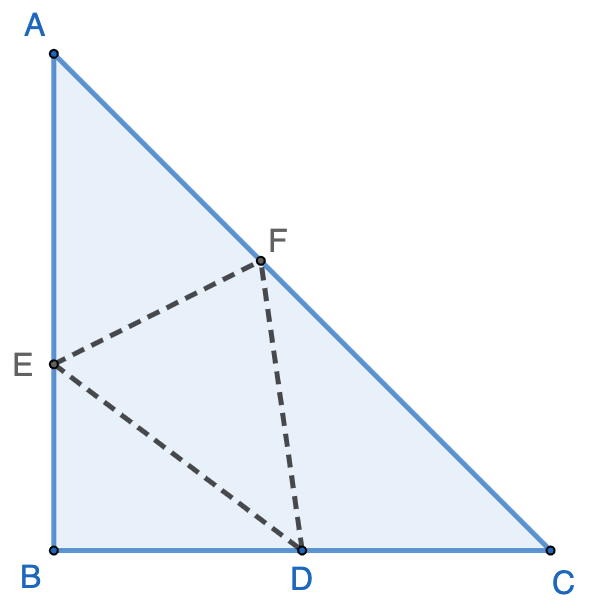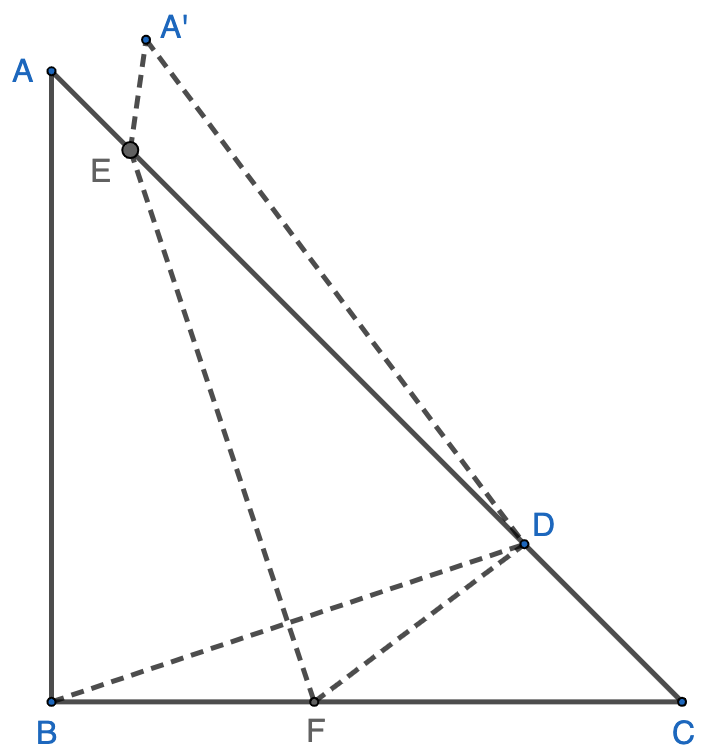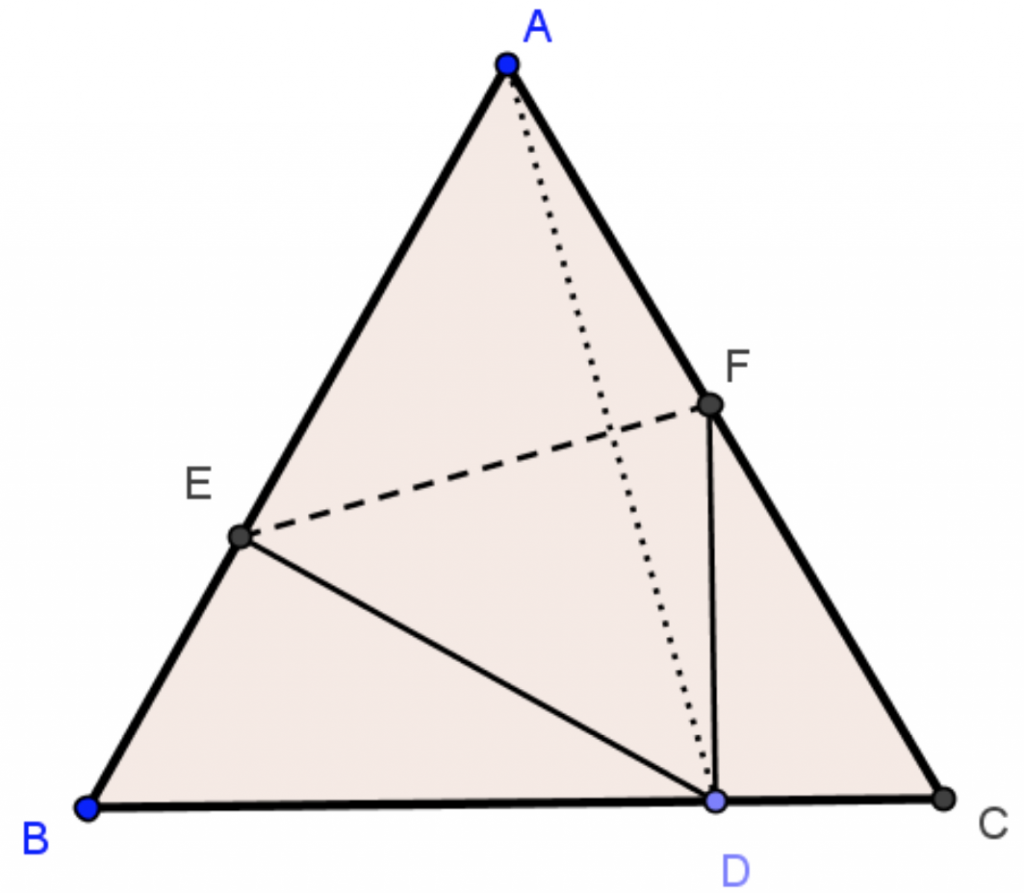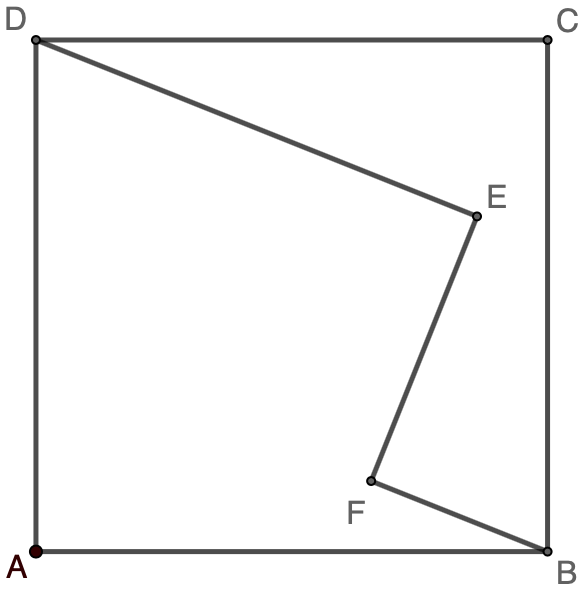 Point $E$ and $F$ are inside the square $ABCD$, with $DE=10$, $EF=6$, $BF=4$, and $\angle{DEF}=\angle{BFE}=90^\circ$. Find the area of the square $ABCD$. Click here for the solutions.
Point $E$ and $F$ are inside the square $ABCD$, with $DE=10$, $EF=6$, $BF=4$, and $\angle{DEF}=\angle{BFE}=90^\circ$. Find the area of the square $ABCD$. Click here for the solutions.
 Solution 1: Draw line $DB$, intersecting $EF$ at $G$. We have $\triangle{DEG}\sim\triangle{BFG}$.
Solution 1: Draw line $DB$, intersecting $EF$ at $G$. We have $\triangle{DEG}\sim\triangle{BFG}$.
$\therefore \dfrac{FG}{EG}=\dfrac{BF}{DE}=\dfrac{4}{10}$
$\because FG+EG=EF=6$
$\therefore FG=\dfrac{12}{7}$, and $EG=\dfrac{30}{7}$
$DG=\sqrt{DE^2+EG^2}=\sqrt{10^2+(\dfrac{30}{7})^2}=\dfrac{10}{7}\sqrt{58}$
$BG=\sqrt{BF^2+FG^2}=\sqrt{4^2+(\dfrac{12}{7})^2}=\dfrac{4}{7}\sqrt{58}$
$\therefore BD=DG+BG=\dfrac{10}{7}\sqrt{58}+\dfrac{4}{7}\sqrt{58}=2\sqrt{58}$
$\therefore$ Area of $ABCD=\dfrac{BD^2}{2}=\dfrac{(2\sqrt{58})^2}{2}=\boxed{116}$
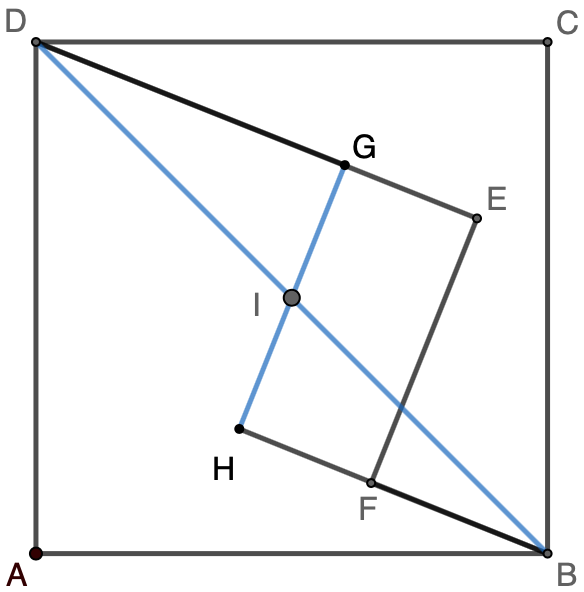 Solution 2: Draw line $DB$. Point $G$ is on $DE$ so that $DG=6$. Extend $BF$ to $H$ so that $BH=6$. Draw line $GH$ intersecting $DB$ at $I$. We have $\triangle{DGI}\cong\triangle{BHI}$.
Solution 2: Draw line $DB$. Point $G$ is on $DE$ so that $DG=6$. Extend $BF$ to $H$ so that $BH=6$. Draw line $GH$ intersecting $DB$ at $I$. We have $\triangle{DGI}\cong\triangle{BHI}$.
$\therefore GI=HI=\dfrac{1}{2}GH=\dfrac{1}{2}{EF}=3$
$\therefore DI^2=BI^2=DG^2+GI^2=6^2+3^2=58$
$\therefore$ Area of $ABCD=2\cdot DI^2=2\cdot 58=\boxed{116}$
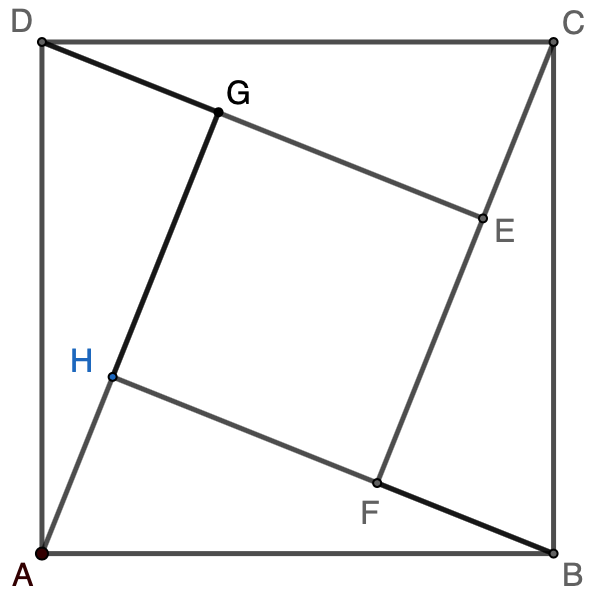 Solution 3: Let point $G$ on $DE$ so that $GE=6$. Extend $BF$ to $H$ so that $FH=6$. Draw line $AH$ and $CE$.
Solution 3: Let point $G$ on $DE$ so that $GE=6$. Extend $BF$ to $H$ so that $FH=6$. Draw line $AH$ and $CE$.
$\therefore GE=EF=FH=GH=6$, and $EFGH$ is a square.
$\because B$, $F$, and $H$ are co-liner, $D$, $G,$ and $E$ are co-liner
$\therefore A$, $H$, and $G$ are co-linear, $C$, $E$, and $F$ are co-liner
$\therefore \triangle{ABH}\cong\triangle{BCF}\cong\triangle{CDE}\cong\triangle{DAG}$
$\therefore$ Area of $ABCD=EFHG+4\cdot\triangle{CDE}=EF^2+4\cdot\dfrac{DE\cdot CE}{2}=6^2+4\cdot\dfrac{4\cdot 10}{2}=\boxed{116}$
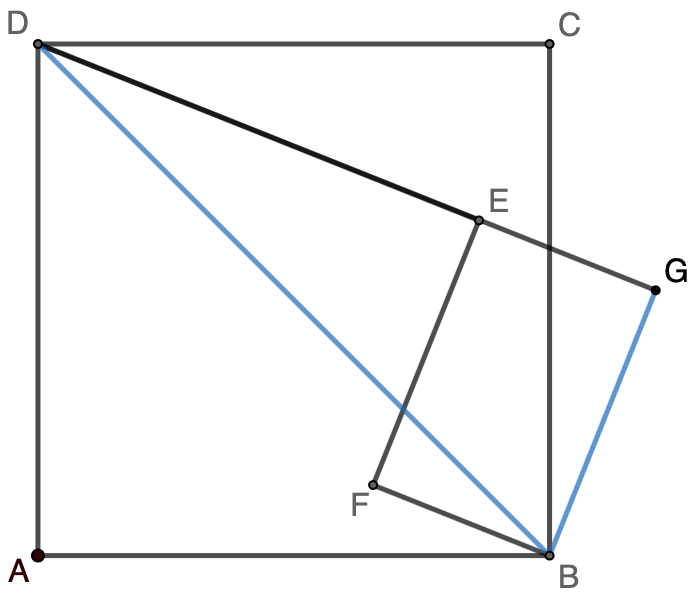 Solution 4: Extend line $DE$ to $G$ so that $EG=4$. Draw line $BD$ and $BG$.
Solution 4: Extend line $DE$ to $G$ so that $EG=4$. Draw line $BD$ and $BG$.
$\because EG=BF=4$ and $\angle{DEF}=\angle{BFE}=90^\circ$
$\therefore BGEF$ is a rectangle
$\therefore \triangle{BDG}$ is a right triangle
$\therefore BD^2=BG^2+DG^2=EF^2+(DE+EG)^2=6^2+(10+4)^2=232$
$\therefore$ Area of $ABCD=\dfrac{1}{2}\cdot BD^2=\dfrac{1}{2}\cdot 232=\boxed{116}$
Generalization: Point $E$ and $F$ are inside square $ABCD$, with $DE=a$, $EF=b$, $BF=c$, and $\angle{DEF}=\angle{BFE}=90^\circ$, then the area of the square $ABCD$ is $$ABCD=\boxed{\dfrac{(a+c)^2+b^2}{2}}$$
Extra: Andrew started at the entry point $D$, which is one corner of a square shaped maze $ABCD$, with the exit point $B$ directly across the diagonal of the square. The following is his track record:
- He entered the maze at point $D$ and walked $20$ feet first along the path.
- He changed his direction $90^\circ$ clock-wise and walked another $20$ feet.
- He changed his direction $90^\circ$ counter-clock-wise and walked another $20$ feet
- He repeated step 2 and step 3 two more times.
- He repeated step 3 once again, then step 2 twice.
- He changed his direction $90^\circ$ counter-clock-wise and walked $40$ feet to reach the exit point $B$.
Based on the above track record, calculate the area of the maze. Click here for the solution.
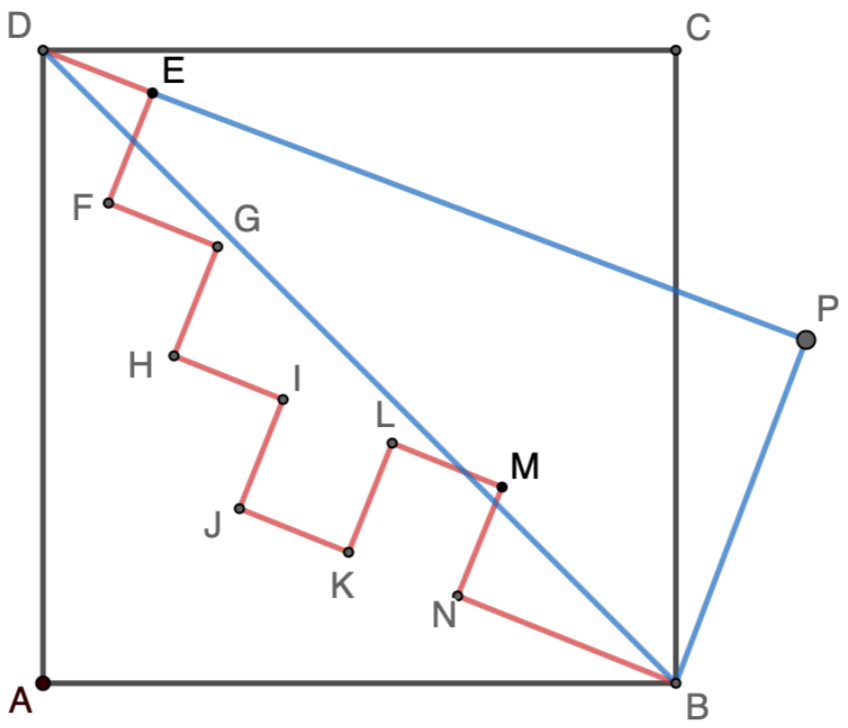 Solution: Based on the track record, the net distance Andrew walked parallel to the initial path direction $DE$ is $140$ feet, and the net distance perpendicular to the initial path direction $DE$ is $60$ feet, as shown the diagram in the right. The length of the diagonal $BD$ of the square $ABCD$ is:
Solution: Based on the track record, the net distance Andrew walked parallel to the initial path direction $DE$ is $140$ feet, and the net distance perpendicular to the initial path direction $DE$ is $60$ feet, as shown the diagram in the right. The length of the diagonal $BD$ of the square $ABCD$ is:
$BD=\sqrt{PD^2+PB^2}=\sqrt{140^2+60^2}=20\sqrt{58}$
Therefore, the area of $ABCD$ is:
$ABCD=\dfrac{BD^2}{2}=\dfrac{(20\sqrt{58})^2}{2}=\boxed{11600}$

